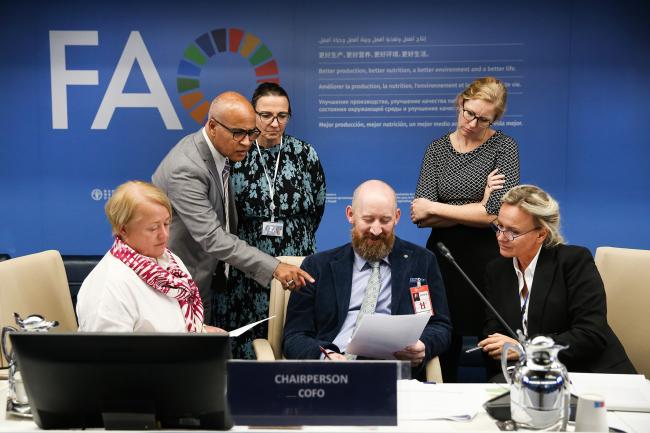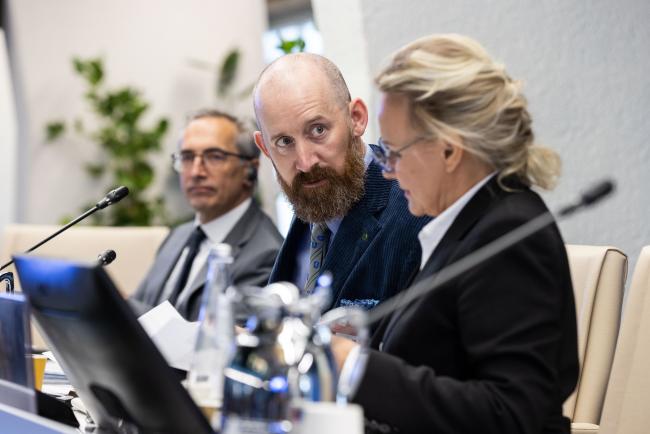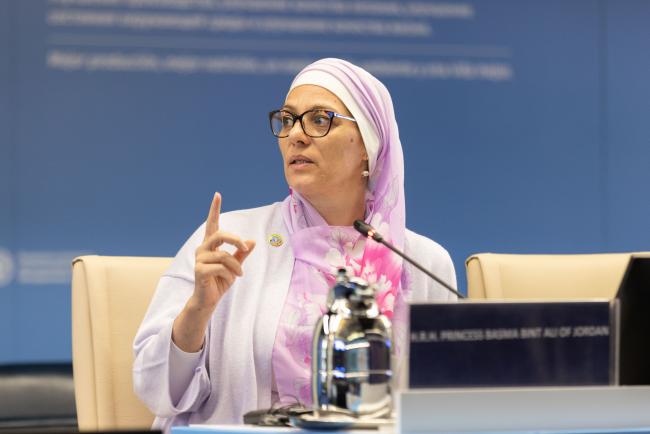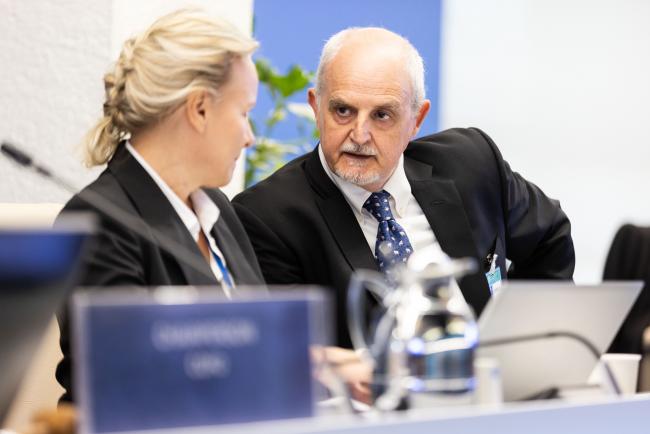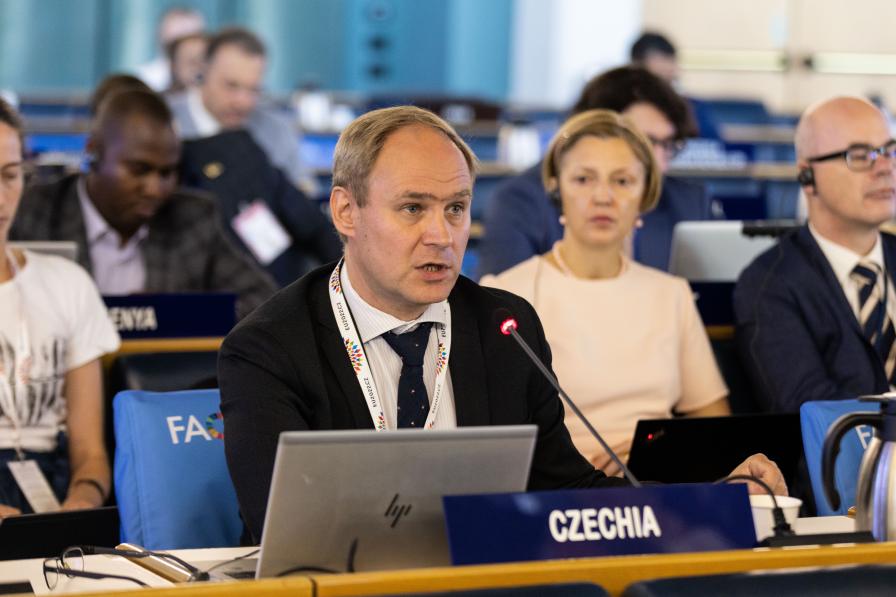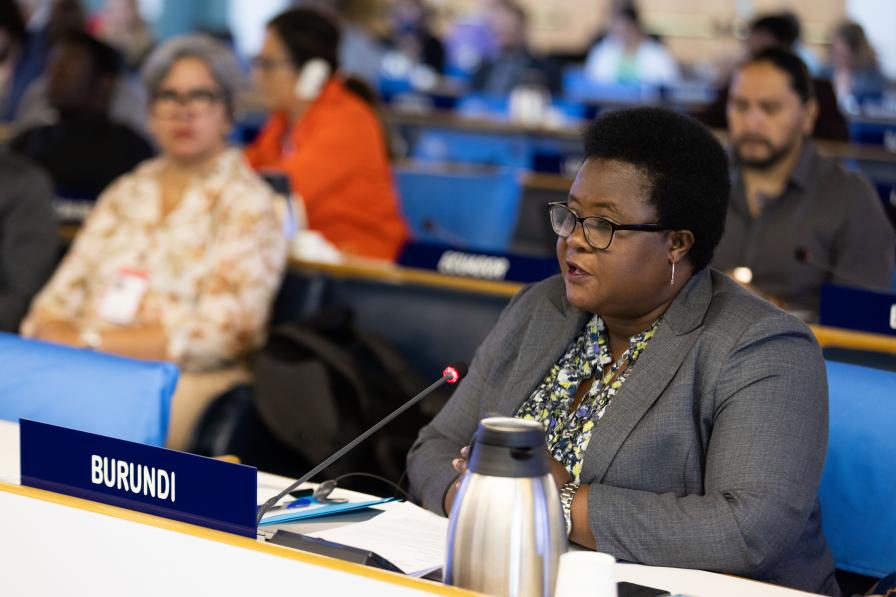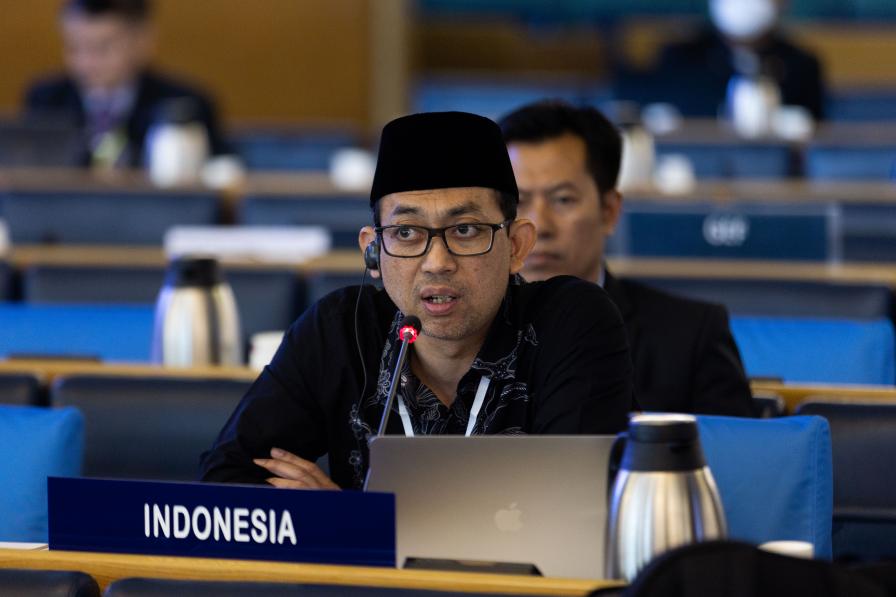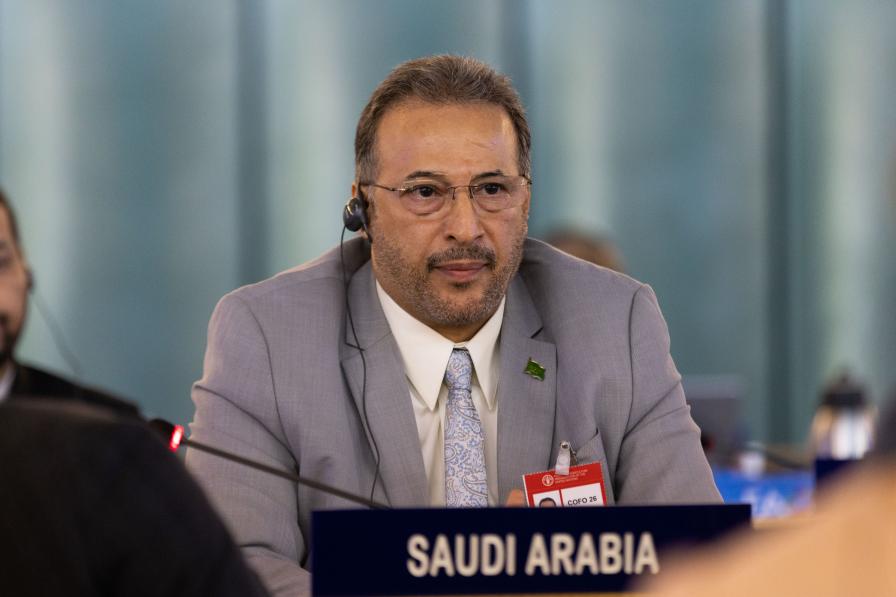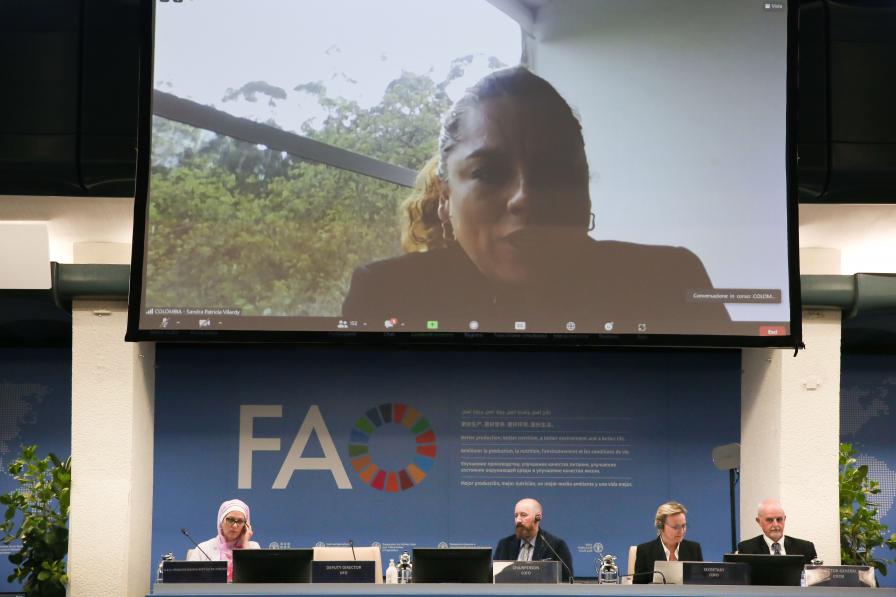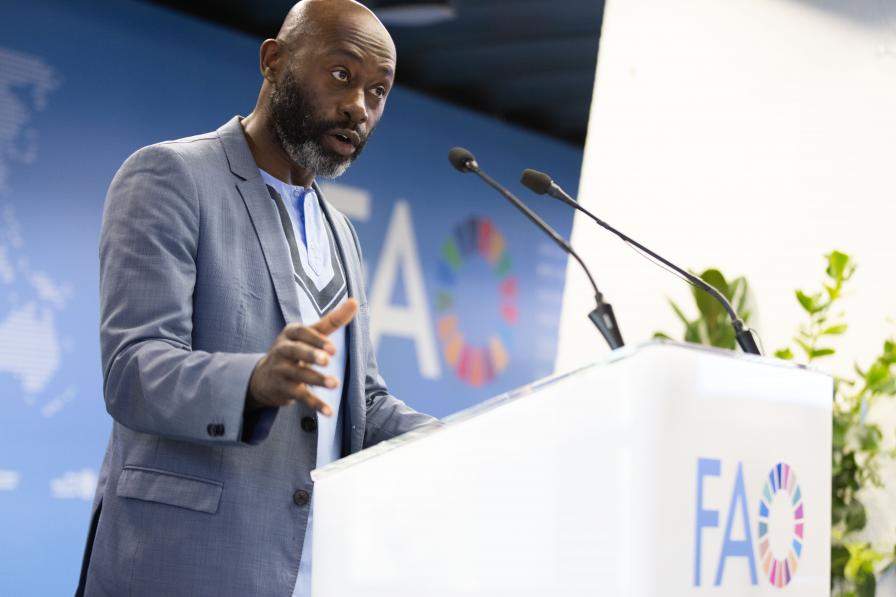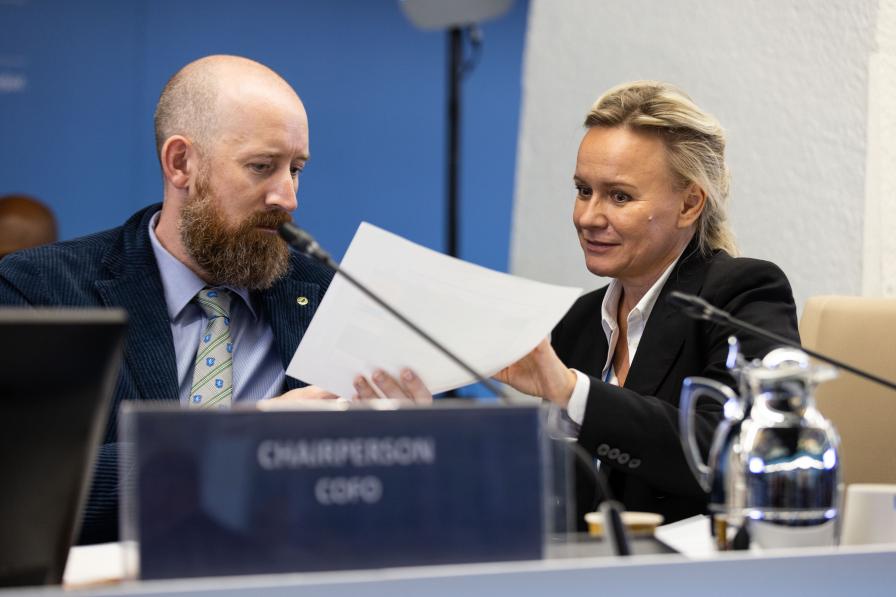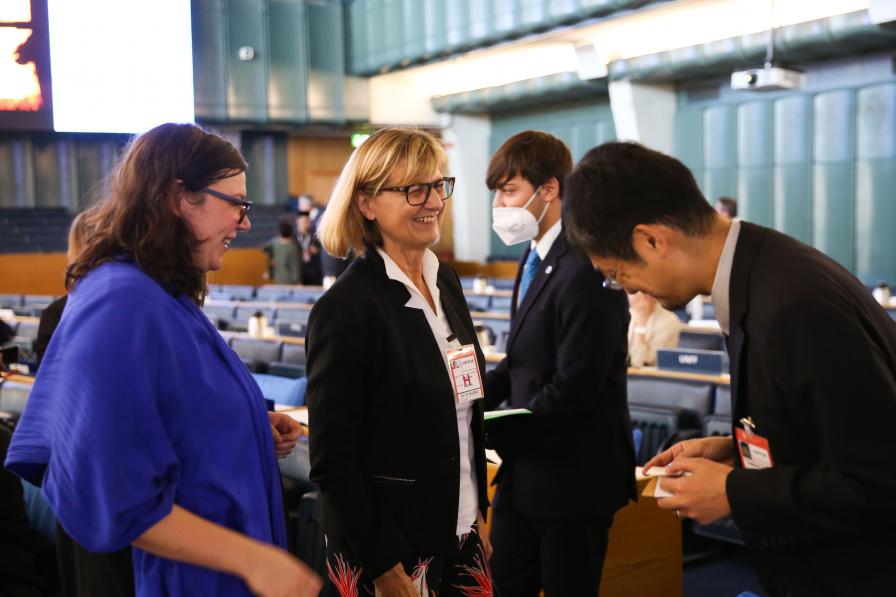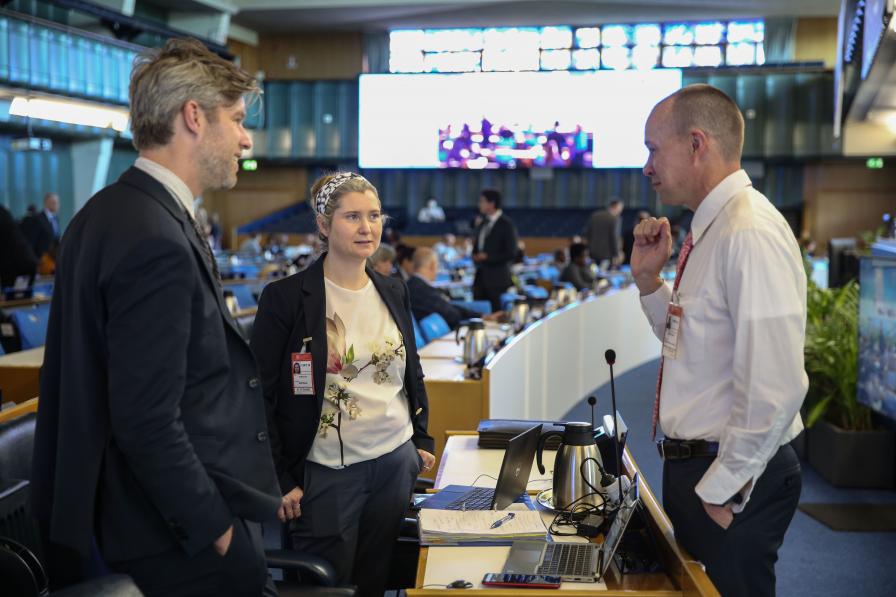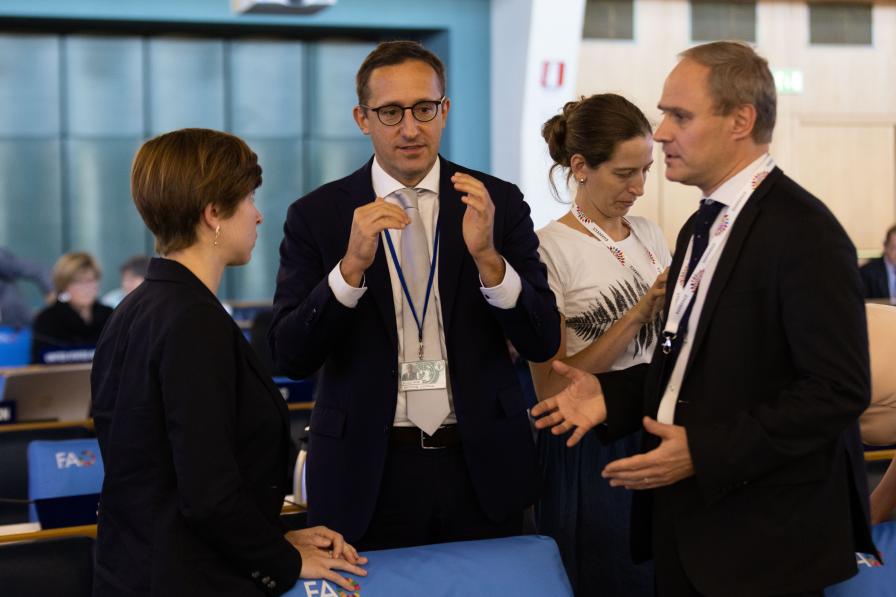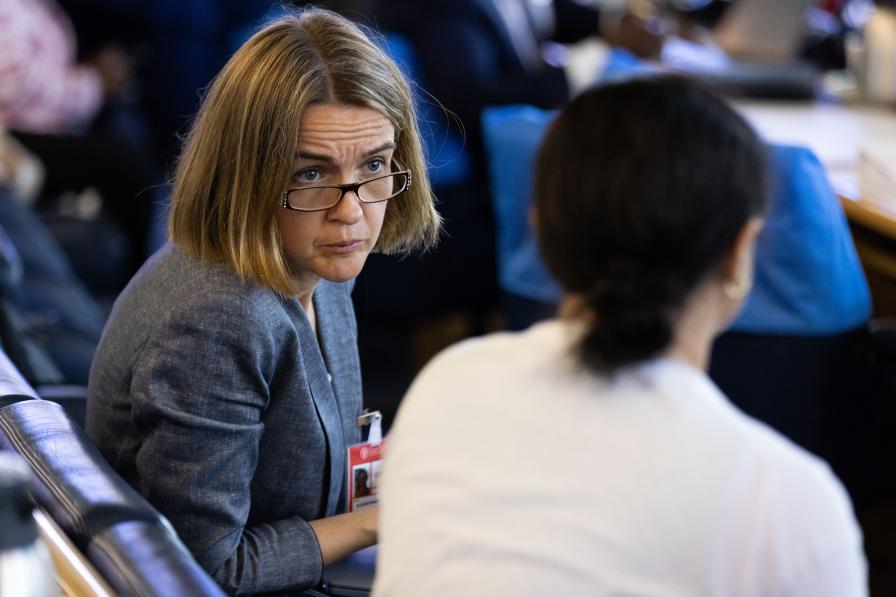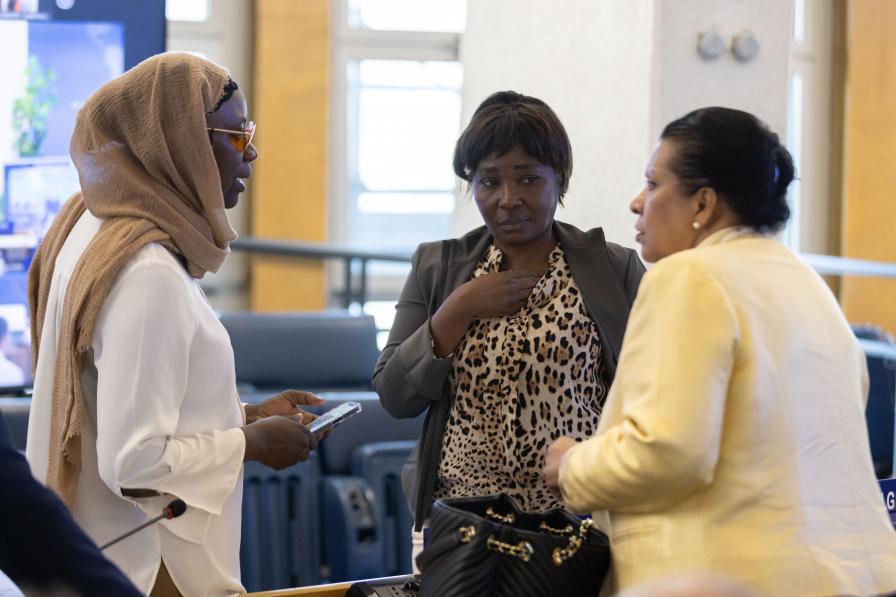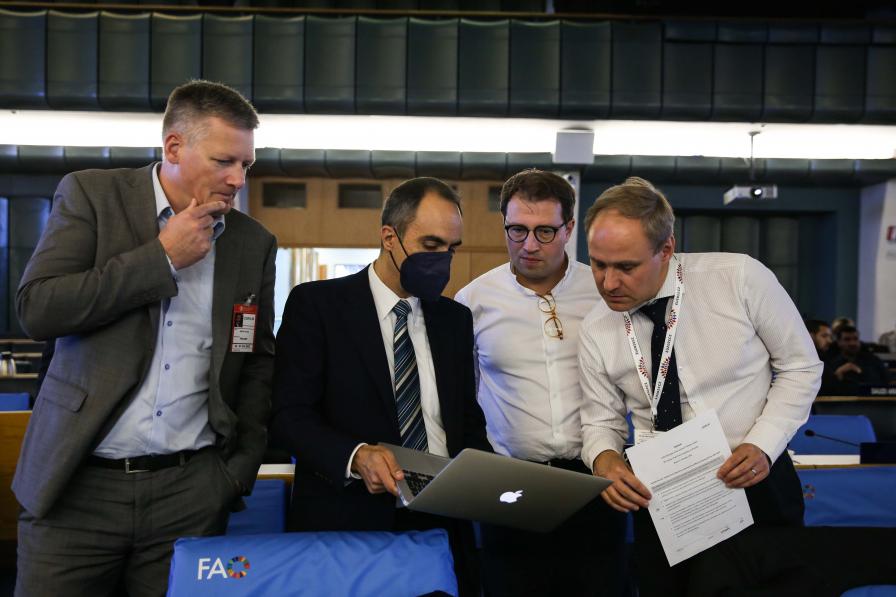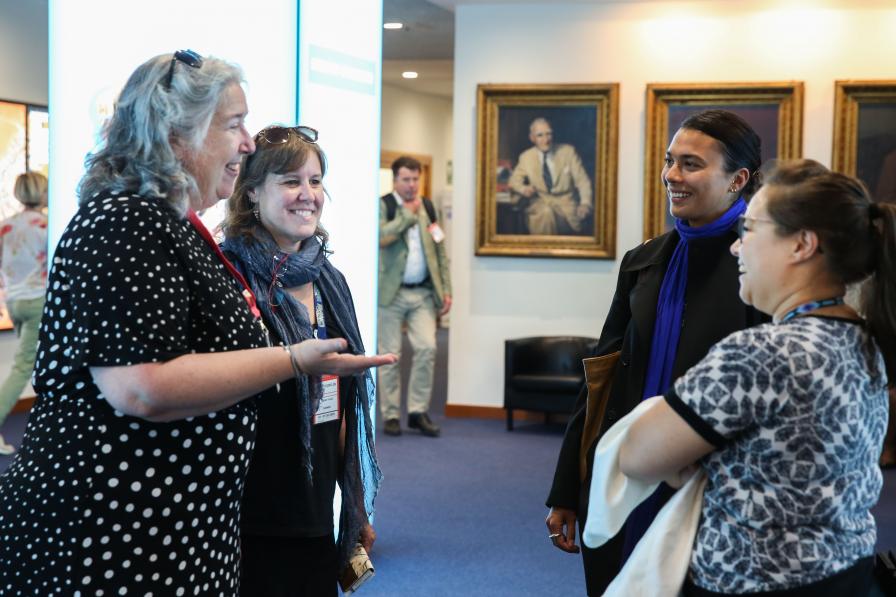Conscious of falling behind in its consideration of an ambitious agenda, the 26th session of the Committee on Forestry (COFO 26) of the Food and Agriculture Organization of the United Nations (FAO) met after lunch in a marathon session until 10:15 pm. During the day the Committee discussed and worked on conclusions regarding: climate change; forests fires; mainstreaming biodiversity across agricultural sectors; and restoration of forested landscapes and the UN Decade on Ecosystem Restoration 2021-2030. The Committee discussed but did not finish reaching conclusions on the Global Forest Resources Assessment (FRA) and Remote Sensing Survey 2021-2022.
The Committee’s consideration of restoration and the UN Decade on Ecosystem Restoration began with a high-level panel featuring Jordan’s Princess Basma bint Ali, Sandra Patricia Vilardy Quiroga, Vice Minister of Policies and Environmental Standardization, Colombia, and Robert Nasi, Director-General, Centre for International Forestry Research (CIFOR).
Princess bint Ali stressed the importance of identifying and showcasing successful restoration projects and cited the example of the Black Jaguar Foundation’s work in Brazil. Vilardy outlined Colombia’s policies and programmes to tie restoration to national socio-economic priorities and its promotion of nature-based solutions. Nasi urged viewing landscape restoration not as an environmental problem, but rather as a people problem, saying if the emphasis is put on people-centered enterprises that tie restoration to benefits to local communities and their economies, restoration will happen.
COFO’s subsequent discussion of the topic concluded by recommending that FAO:
- support members in enhancing their forest ecosystem restoration efforts;
- provide tools to strengthen their related capacity;
- share knowledge and good practices; and
- facilitate access to finance.
On climate change, the Committee addressed both forest solutions for combating climate change generally, and then specifically the Action Plan for the implementation of the FAO’s new Strategy on Climate Change 2022-2031. On the former, COFO invited FAO to assist Members to optimize the mitigation, adaptation and resilience potential of forests by halting forest loss and degradation, restoring degraded lands and drylands, and implementing sustainable forest management (SFM). On the latter, COFO agreed the Action Plan should be a regularly updated “living document,” complemented by a results framework and monitoring and reporting.
Regarding fire, the Committee looked at FAO’s Fire Management Strategy, integrated fire management (IFM), and the Global Fire Management Platform being co-developed by FAO and the UN Environment Programme (UNEP). COFO expressed appreciation for the Strategy, recommended that FAO support Members in implementing IFM, and welcomed the Platform.
On biodiversity, COFO reviewed FAO's Strategy on Mainstreaming Biodiversity across Agricultural Sectors, its Action Plan 2021-2023, and its work toward a 2024-2027 Action Plan. COFO invited FAO to reflect in the 2024-2027 Action Plan the importance of addressing deforestation and forest biodiversity loss.
Regarding the FRA and the use of remote sensing in the FRA, COFO welcomed preparations for FAO’s 2025 FRA and the flexible approach to voluntary reporting on key indicators, and ongoing improvements to the remote sensing survey. The Committee also favored recommending that FAO continue the development and harmonization of methods and definitions for forest data collection. Further discussions were postponed until Thursday.
All ENB photos are free to use with attribution. For COFO 26, please use: Photo by IISD/ENB | Natalia Mroz
To receive free coverage of global environmental events delivered to your inbox, subscribe to the ENB Update newsletter.
Selected Images
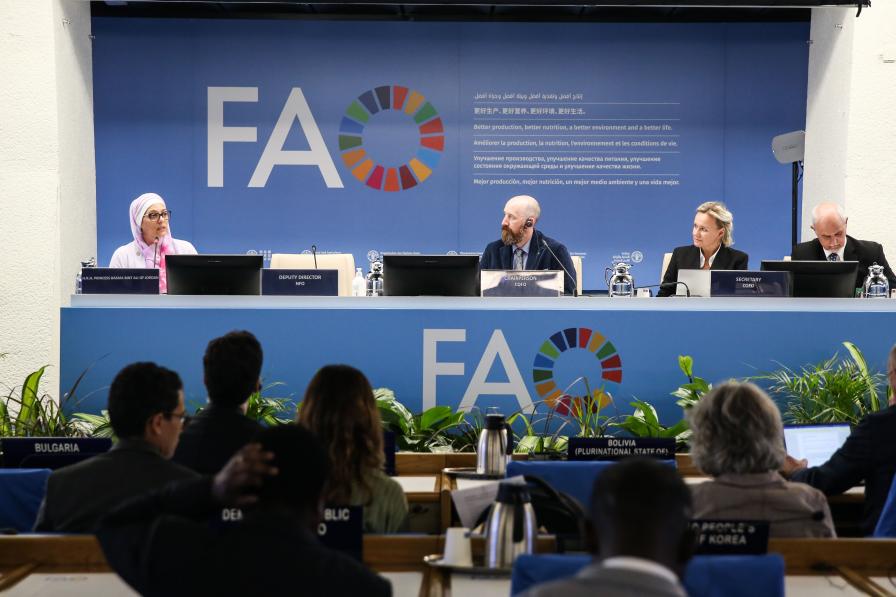
High Level Panel “Restoration and the UN Decade on Ecosystem Restoration 2021- 2030.” From L-R: Princess Basma bint Ali, Jordan; Glenn Hargrove, acting Chair, COFO 26; Malgorzata Buszko-Briggs, COFO Secretary; Robert Nasi, Director-General, CIFOR

